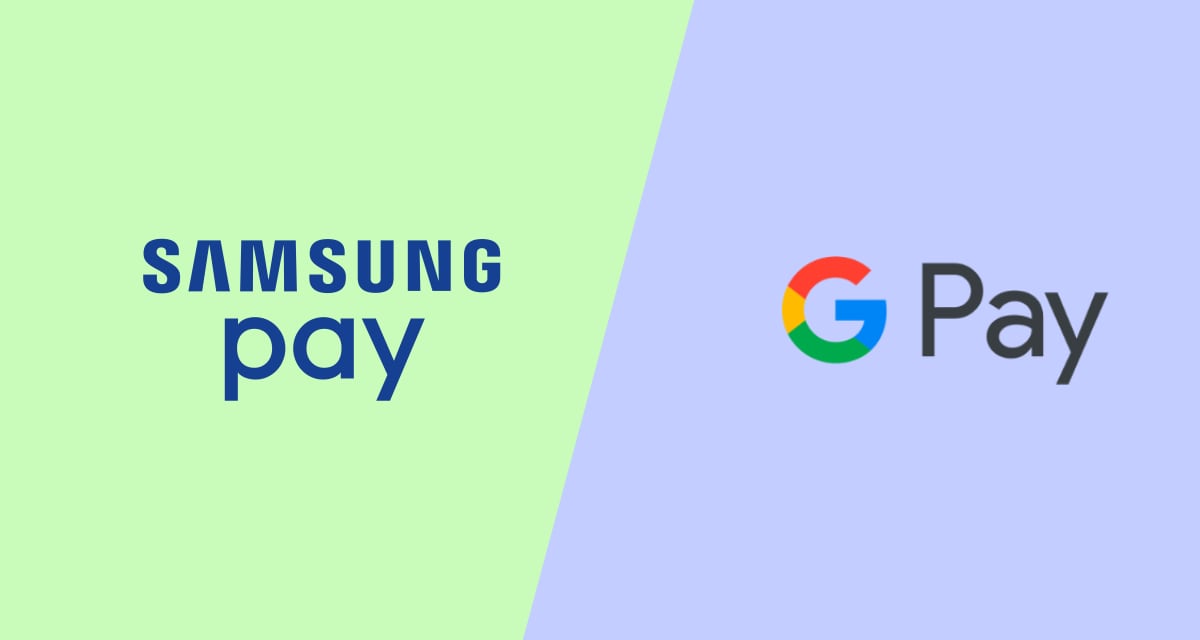In today’s fast-paced digital world, the way we handle transactions is rapidly changing. Mobile payment apps like Google Pay and Samsung Pay have become integral to facilitating contactless payments, offering a blend of convenience and security.
These digital wallets are transforming smartphones into payment devices that are accepted at millions of locations worldwide. Our discussion here centers on the nuances between Google Pay and Samsung Pay, exploring their compatibility, features, and how they integrate within the payment ecosystem.
As we consider the two payment systems, it’s important to note that Google Pay is designed for a wide variety of Android devices as well as iOS, making its usage more universal.
On the other hand, Samsung Pay is exclusive to Samsung devices but stands out with its unique technology that allows it to be used at nearly all payment terminals. Both apps support NFC (Near Field Communication) for tap-to-pay functionality, but Samsung Pay also uses MST (Magnetic Secure Transmission) technology to mimic a card swipe, thus broadening its acceptance with traditional payment terminals that do not support NFC.

Table of Contents
Overview and Compatibility
In exploring Google Pay and Samsung Pay, we uncover the distinct paths these services take when it comes to device compatibility and supported payment technologies.
Supported Devices and Platforms
Google Pay:
- Android: Available on devices with Android Lollipop (5.0) or higher.
- iOS: Compatible with iPhones running iOS 12.0 or later.
- Smartwatches: Also integrates with Wear OS devices.
Samsung Pay:
- Samsung Devices: Exclusive to Samsung smartphones and select smartwatches.
- Other Platforms: Not supported on non-Samsung devices or on the iOS platform.
Supported Payment Technologies
Google Pay:
- NFC (Near Field Communication): Utilizes NFC for transactions at NFC-equipped terminals.
Samsung Pay:
- NFC: Supported for contactless payments.
- MST (Magnetic Secure Transmission): Additionally, uses MST to emulate a card swipe, allowing payments at terminals that do not support NFC.
Features and User Experience
In our comparison between Google Pay and Samsung Pay, we will explore the features of each service with a focus on their user interface design, security features, and the way they handle loyalty and membership cards.
User Interface Design
The User Interface (UI) is a critical aspect of any app as it affects how easily users can navigate and accomplish their tasks.
Google Pay’s interface is straightforward, with a clean design that promotes an intuitive user experience. Users have access to their card information and transaction history with just a few taps.
On the other hand, Samsung Pay offers a similarly streamlined UI, with the added benefit of being able to swipe up from the home screen to access the wallet, making it quickly accessible from any screen.
Security and Authentication
When it comes to Security, both Google Pay and Samsung Pay employ rigorous measures to protect user information.
Google Pay utilizes tokenization to replace sensitive card data with unique identifiers to prevent fraud. Samsung Pay also uses tokenization and adds another layer of security with Samsung Knox – a defense-grade security platform that monitors the phone for vulnerabilities.
Both services support biometric authentication options, such as fingerprint and facial recognition, ensuring that payments can only be authorized by the user.
Loyalty and Membership Card Integration
Managing Loyalty Cards and memberships is a feature where both Google Pay and Samsung Pay excel.
Users can store their various loyalty and membership cards within the apps, which can be easily accessed and used at participating retailers.
With both payment services, presenting and scanning loyalty information can be done with a single tap or scan, simplifying and expediting the checkout process.
This integration is convenient for users who frequent stores and services that offer loyalty programs.
By continuously improving on these areas, both Google Pay and Samsung Pay aim to enhance the overall feature set and user experience, each with its own unique offerings catered to its user base.
Supported Banks and Payment Networks
When it comes to choosing a digital wallet, we must consider the compatibility with our existing bank accounts and payment networks.
Google Pay accepts various card types, and we have observed an extensive list of supported banks, including major banks and smaller credit unions. Here’s an overview of Google Pay’s compatibility:
- Credit and Debit Cards: Support for major card networks such as Visa, MasterCard, American Express, and Discover.
- Banks: Works with numerous banks, from large national chains to local institutions.
- Other Payment Methods: Google Pay also offers integration with other services like PayPal.
We have found that Samsung Pay typically mirrors Google Pay in its support for major credit and debit cards, with extensive compatibility that ensures wide usability:
- Credit and Debit Cards: Accepts cards from networks such as Visa, MasterCard, American Express, and Discover.
- Banks: Partners with a wide range of banks, ensuring that many users can connect their bank accounts directly to the app.
- Distinct Feature: What sets Samsung Pay apart is its Magnetic Secure Transmission (MST) technology, which allows users to make payments on traditional magnetic stripe terminals in addition to NFC terminals.
In our examination, we have determined that both Google Pay and Samsung Pay strive to offer extensive support for various financial entities to maximize convenience for their users. This inclusivity ensures that most of our debit or credit cards and bank accounts can be linked with either service, making our transition to mobile payments seamless and simple.
Usage and Ecosystem
In evaluating Google Pay and Samsung Pay, we find that they each offer unique advantages when it comes to in-store and online payments, as well as their respective rewards and savings programs.
In-store and Online Payment Options
Google Pay and Samsung Pay both support NFC (Near Field Communication) technology for contactless payments, making in-store purchases convenient and secure.
With NFC, we can simply tap our smartphones on the card reader to complete transactions, provided the terminal is NFC-enabled.
- In-Store Purchases: Both services are accepted at a majority of retailers with NFC payment terminals. However, Samsung Pay also utilizes Magnetic Secure Transmission (MST) technology, which allows it to work with nearly all card readers that accept swipe cards, not just NFC terminals. This means that Samsung Pay has a broader acceptance in physical stores.
- Online Payments: Google Pay is available across all Android devices and works with a wider range of apps and websites compared to Samsung Pay.
- Samsung Pay Cash: Specifically, Samsung offers a virtual prepaid card, known as Samsung Pay Cash, which users can load and use for spending both in-store and online.
Rewards and Savings
Both payment systems have associated Rewards Programs designed to benefit regular users.
- Google Pay: Users can earn rewards and take advantage of offers and discounts from partner merchants directly within the app.
- Samsung Pay: It has a tiered rewards system where users earn points for every transaction. These points can be redeemed for various rewards such as gift cards, products, or even entry into instant win games. In addition to this, Samsung Pay often incorporates additional cash back, discounts, and coupons into its payment platform, offering more ways to save money.
By providing various incentives through their rewards programs, both Google Pay and Samsung Pay enhance the payment experience. They offer potential savings and rewards, promoting user engagement and loyalty.





